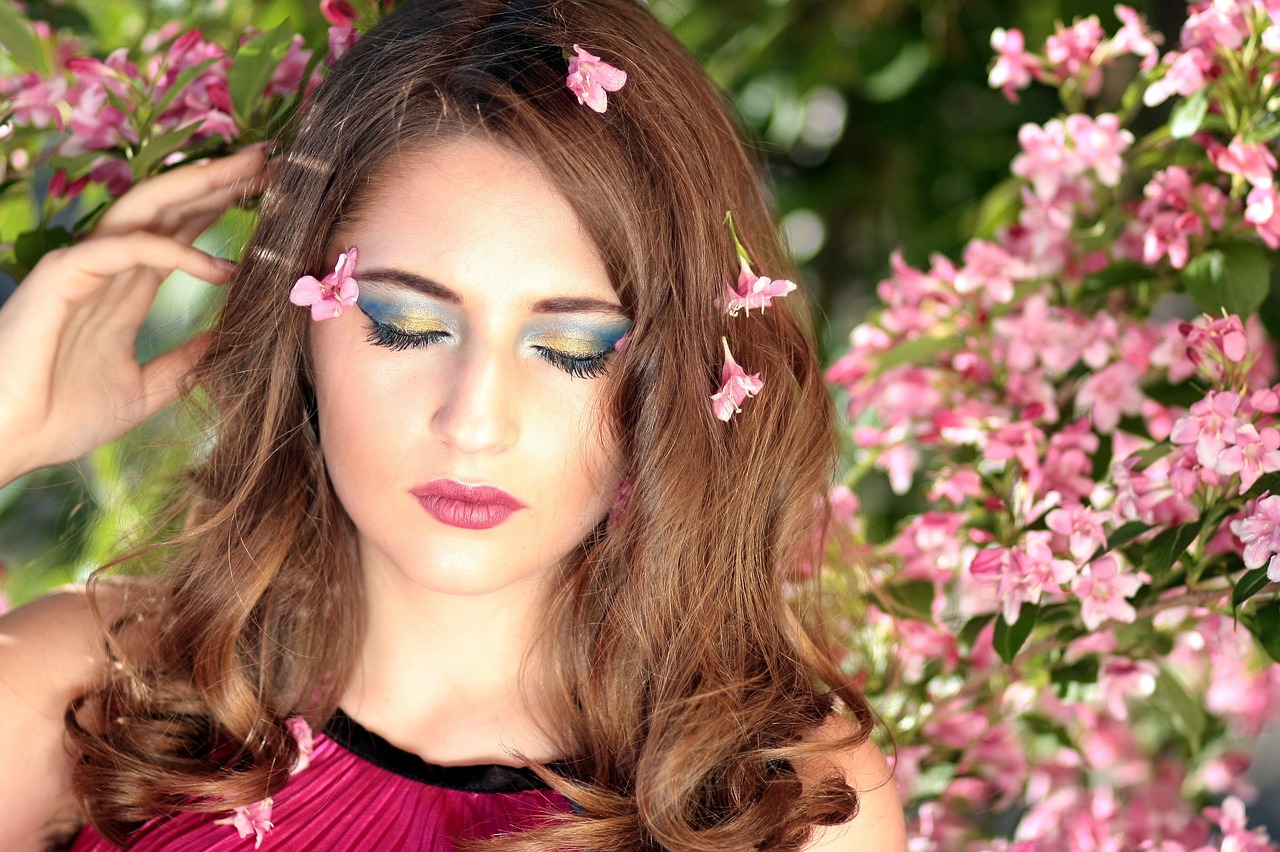In a world where beauty meets responsibility, sustainable beauty brands are emerging as the heroes of our skincare and makeup routines. These brands are not just about looking good; they are about feeling good, too—both for ourselves and for the planet. Imagine a beauty routine where every product you use is crafted with care, considering the well-being of the Earth and its inhabitants. Isn’t that a refreshing thought?
Sustainable beauty brands prioritize eco-friendly practices, ethical sourcing, and cruelty-free products. They understand that the choices we make in our beauty routines can have a profound impact on the environment. By opting for these brands, we are not just enhancing our beauty; we are also contributing to a healthier planet. It’s like planting a seed of change with every purchase, nurturing a greener future for generations to come.
So, what makes these brands stand out? It’s their commitment to using natural ingredients that are gentle on both our skin and the Earth. They often utilize organic farming practices, ensuring that harmful chemicals do not seep into the soil or water systems. Moreover, these brands are transparent about their ingredient sourcing, allowing consumers to make informed choices about what they put on their skin.
Let’s not forget about the packaging! Sustainable beauty brands are leading the charge in innovative packaging solutions that reduce waste and promote recycling. From biodegradable containers to refillable options, these brands are redefining how we think about beauty packaging. It’s like giving a second life to our beauty products, making sustainability a core part of the beauty experience.
As we dive deeper into the world of sustainable beauty, we’ll explore some of the top brands making waves in this space. Each of these brands is a testament to the fact that you can enjoy luxurious beauty products without compromising your values. Whether you’re looking for skincare, makeup, or haircare, there’s a sustainable option out there that will cater to your needs while being kind to the planet.
In the upcoming sections, we’ll discuss specific brands that embody these principles, highlighting their unique offerings and how they contribute to a more sustainable beauty landscape. So, buckle up and get ready to discover the best sustainable beauty brands that are not just trends, but a movement towards a more conscious way of caring for ourselves and our environment.

When it comes to beauty, the term sustainability is more than just a buzzword; it’s a movement that’s reshaping how we think about our products and their impact on the planet. So, what exactly defines a sustainable beauty brand? It's not just about slapping a green label on a product and calling it eco-friendly. Instead, these brands embody a holistic approach that prioritizes the environment, ethical practices, and social responsibility.
At the core of sustainable beauty is the use of eco-friendly ingredients. This means sourcing materials that are not only effective but also gentle on the earth. Think about it: when you choose a product made from natural, organic ingredients, you're not just treating your skin; you're also contributing to the health of our planet. Sustainable brands often avoid harmful chemicals, opting instead for plant-based alternatives that are better for both your skin and the environment.
Another key characteristic of sustainable beauty brands is ethical sourcing. This involves ensuring that the ingredients are harvested in a way that respects both the environment and the communities involved in their production. Brands committed to sustainability often work directly with farmers and artisans, ensuring fair wages and safe working conditions. This not only supports local economies but also fosters a sense of community and shared responsibility.
Moreover, a commitment to social responsibility is essential. Sustainable beauty brands often engage in practices that promote social equity and environmental stewardship. They may participate in initiatives aimed at reducing plastic waste, supporting biodiversity, or even advocating for animal rights. This ethos of responsibility extends beyond the products themselves; it reflects a brand's overall mission to create a positive impact.
In addition to these principles, many sustainable beauty brands are also transparent about their practices. They openly share information about their sourcing, production methods, and environmental impact, allowing consumers to make informed choices. This transparency builds trust and encourages a deeper connection between the brand and its customers.
To summarize, the definition of a sustainable beauty brand encompasses:
As consumers become more aware of their choices, the demand for sustainable beauty products continues to grow. By understanding what defines a sustainable beauty brand, you can make informed decisions that align with your values and contribute to a healthier planet.

When it comes to skincare, the **demand for sustainability** has never been higher. Consumers are increasingly aware of the impact their choices have on the planet, leading them to seek out brands that not only deliver effective results but also prioritize **eco-friendly practices**. So, what are some of the top sustainable skincare brands making waves in the industry? Let’s dive into a few innovators that are setting the standard for responsible beauty.
One standout brand is Drunk Elephant. This company is renowned for its commitment to clean ingredients, steering clear of what they call the "Suspicious 6"—essentially, the six ingredients they believe are harmful to the skin and the environment. Their products are formulated without **fragrance, essential oils**, or **dyes**, making them suitable for even the most sensitive skin types. Plus, their **recyclable packaging** further emphasizes their dedication to sustainability.
Another brand worth mentioning is Herbivore Botanicals. This Seattle-based company focuses on creating high-quality, natural skincare products that are not only effective but also beautiful to look at. Their formulations are made with **botanical ingredients**, and they pride themselves on being **cruelty-free** and using **eco-friendly packaging**. Each product is lovingly crafted to ensure it’s as good for the environment as it is for your skin. For instance, their popular Blue Tansy Resurfacing Clarity Mask is a fan favorite, showcasing the brand’s commitment to **natural beauty** without compromising on quality.
Let’s not forget about Osea Malibu, a brand that harnesses the power of the ocean in its skincare line. Their products are vegan, cruelty-free, and made with **sustainable ingredients** sourced from the sea. Osea is particularly known for its **seaweed-based formulations**, which are rich in nutrients and beneficial for the skin. Their commitment to **environmental responsibility** extends beyond ingredients, as they also utilize **recyclable materials** for their packaging.
To highlight these brands further, here’s a quick comparison table:
| Brand | Key Features | Signature Product |
|---|---|---|
| Drunk Elephant | Clean ingredients, recyclable packaging, suitable for sensitive skin | Virgin Marula Luxury Facial Oil |
| Herbivore Botanicals | Natural ingredients, cruelty-free, eco-friendly packaging | Blue Tansy Resurfacing Clarity Mask |
| Osea Malibu | Vegan, sustainable seaweed ingredients, recyclable materials | Ocean Cleansing Mudd |
As you can see, these brands not only focus on creating effective skincare solutions but also prioritize the health of our planet. They understand that beauty should not come at the expense of the environment, and their innovative approaches are paving the way for a more sustainable future in the beauty industry.
In conclusion, opting for sustainable skincare brands is a step towards a more responsible beauty routine. By choosing products that are both effective and eco-conscious, you can indulge in self-care while also caring for the Earth. Remember, every little choice counts, and supporting brands that prioritize sustainability can make a significant impact. So, which sustainable skincare brand will you try next?
Q1: What makes a skincare brand sustainable?
A sustainable skincare brand typically prioritizes eco-friendly ingredients, ethical sourcing, and environmentally responsible packaging. They aim to minimize their environmental footprint while providing effective skincare solutions.
Q2: Are sustainable skincare products more expensive?
While some sustainable skincare products may be priced higher due to the quality of ingredients and ethical practices, many brands offer affordable options. It's worth investing in products that align with your values and contribute to a healthier planet.
Q3: How can I tell if a skincare brand is truly sustainable?
Look for brands that are transparent about their sourcing, production processes, and ingredient lists. Certifications like **Cruelty-Free**, **Vegan**, and **Eco-Cert** can also indicate a brand's commitment to sustainability.

When it comes to enhancing our beauty, why not do it in a way that’s kind to the planet? Sustainable makeup brands are stepping up to the plate, offering products that not only make us look good but also feel good about our choices. These brands are revolutionizing the cosmetics industry by focusing on eco-friendly ingredients, ethical sourcing, and responsible manufacturing practices. Imagine putting on your favorite lipstick or foundation, knowing that it was crafted with care for the environment and our furry friends. Sounds fantastic, right?
One standout in the realm of sustainable makeup is ILIA Beauty. This brand is all about clean beauty, using organic ingredients that are not only effective but also nourishing for your skin. Their products are packaged in recyclable materials, and they prioritize transparency in their ingredient sourcing. With ILIA, you can achieve that flawless look while keeping your conscience clear.
Another brand making waves is RMS Beauty. Known for its commitment to using raw, food-grade ingredients, RMS offers a range of makeup that is both luxurious and sustainable. Their packaging is minimalistic and recyclable, reflecting their ethos of reducing waste. Plus, their products are designed to enhance your natural beauty, allowing your skin to breathe while looking radiant.
Let’s not forget about 100% Pure, a brand that takes sustainability to heart. They focus on using fruit pigments and other natural ingredients, steering clear of synthetic dyes and chemicals. Their commitment to cruelty-free practices means you can enjoy their vibrant colors without any guilt. 100% Pure also emphasizes eco-friendly packaging, ensuring that your beauty routine doesn’t come at the expense of the environment.
What’s even more exciting is that many of these brands are actively engaging with their customers to promote sustainable practices. They often host workshops, share educational content on social media, and encourage their followers to recycle and reduce waste. This community-oriented approach not only fosters a sense of belonging but also empowers consumers to make informed choices.
But how do you choose the right sustainable makeup brand for you? Here are a few tips:
In conclusion, sustainable makeup brands are not just a trend; they represent a fundamental shift in how we view beauty. By choosing products that are kind to the earth, we’re not only enhancing our own beauty but also contributing to a healthier planet. So, the next time you’re shopping for makeup, consider going green. Your skin, and the planet, will thank you!
Q: What makes a makeup brand sustainable?
A: A sustainable makeup brand prioritizes eco-friendly ingredients, ethical sourcing, cruelty-free practices, and environmentally responsible packaging.
Q: Are sustainable makeup products as effective as traditional ones?
A: Yes! Many sustainable brands offer high-quality products that perform just as well, if not better, than conventional makeup.
Q: How can I find out if a brand is truly sustainable?
A: Look for certifications, read reviews, and check the brand's website for information on their practices and ingredient sourcing.
Q: Is sustainable makeup more expensive?
A: While some sustainable products may be priced higher due to quality ingredients and ethical practices, many brands offer affordable options that provide great value.

In recent years, the beauty industry has witnessed a remarkable shift towards sustainability, and haircare brands are no exception. With consumers becoming increasingly aware of their environmental footprint, many brands have stepped up to the plate, offering products that not only nourish our hair but also care for the planet. These brands emphasize the use of natural ingredients, ethical sourcing, and eco-friendly packaging, making them the perfect choice for the conscious consumer. So, what exactly does it mean for a haircare brand to embrace sustainability? Let’s dive into some of the key aspects that define these innovative companies.
First and foremost, sustainable haircare brands prioritize the use of natural and organic ingredients. This means avoiding harmful chemicals and synthetic additives that can harm both our bodies and the environment. Instead, they opt for plant-based ingredients that are not only effective but also biodegradable. For instance, brands like Rahua utilize ingredients sourced from the Amazon rainforest, ensuring that their products are not only good for your hair but also for the communities involved in their production. By choosing such brands, you’re not just treating your hair; you’re also supporting sustainable farming practices and fair trade.
Moreover, these brands are committed to ethical sourcing. This involves ensuring that the ingredients are harvested responsibly, without harming ecosystems or exploiting local communities. Companies like SheaMoisture have built their brand on the foundation of fair trade, providing fair wages and supporting local farmers. This commitment to ethical practices not only enhances the quality of their products but also fosters a sense of community and responsibility.
Another critical aspect of sustainable haircare is the focus on eco-friendly packaging. Traditional beauty products often come in plastic containers that contribute to the global waste crisis. In contrast, many sustainable brands are adopting innovative packaging solutions, such as recyclable, biodegradable, or even refillable options. For example, brands like Ethique offer solid shampoo bars that eliminate the need for plastic bottles altogether. This not only reduces waste but also encourages consumers to rethink their purchasing habits and embrace more sustainable choices.
To further illustrate the impact of sustainable haircare brands, here’s a quick overview of some standout companies leading the charge in eco-conscious hair care:
| Brand | Key Features | Notable Products |
|---|---|---|
| Rahua | Natural ingredients, ethical sourcing | Rahua Shampoo, Rahua Conditioner |
| SheaMoisture | Fair trade, community-focused | Raw Shea Butter Shampoo, Coconut & Hibiscus Curl Enhancing Smoothie |
| Ethique | Zero waste, solid bars | Frizz Wrangler Shampoo Bar, Eco-Friendly Conditioner Bar |
In conclusion, embracing sustainability in haircare is more than just a trend; it’s a movement towards a healthier planet and a more ethical approach to beauty. By choosing brands that prioritize natural ingredients, ethical sourcing, and eco-friendly packaging, consumers can enjoy beautiful hair while making a positive impact on the environment. So next time you're shopping for hair products, consider opting for those that not only care for your locks but also care for the world we live in.
Frequently Asked Questions

In today's beauty landscape, choosing cruelty-free products is more than just a trend; it's a powerful statement about your values and priorities. With increasing awareness about animal welfare, many consumers are now seeking brands that do not test their products on animals. But why does this matter so much? Well, imagine a world where beauty doesn't come at the expense of innocent lives. By opting for cruelty-free products, you're not just treating yourself to great skincare or makeup; you're also supporting a movement that advocates for ethical practices in the beauty industry.
Cruelty-free brands are committed to ensuring that their products are developed without harming animals. This means they refuse to conduct tests on animals at any stage of product development, from formulation to final testing. The importance of this choice extends beyond just the treatment of animals; it reflects a broader commitment to ethical responsibility and transparency. When you choose cruelty-free, you're supporting companies that prioritize compassion and ethical sourcing. It’s like casting your vote for a kinder, more humane world every time you shop!
Moreover, the demand for cruelty-free products is reshaping the beauty industry. As consumers become more conscious of their choices, brands are responding by reformulating their products and adopting ethical practices. This shift is not just beneficial for animals; it also encourages innovation in product development. Many cruelty-free brands are now leading the charge in creating effective, high-quality products that are both safe for animals and effective for consumers.
Interestingly, the rise of cruelty-free products has also sparked a movement towards greater transparency in the beauty industry. Consumers are increasingly interested in knowing where their products come from and how they are made. Many cruelty-free brands openly share their ingredient sourcing and manufacturing processes, allowing customers to make informed decisions. This level of transparency builds trust and fosters a deeper connection between brands and their consumers.
In addition, the impact of choosing cruelty-free extends beyond personal beauty routines. By supporting these brands, you contribute to a larger societal change that promotes animal welfare and ethical treatment across industries. It’s a ripple effect; when consumers demand cruelty-free options, companies are compelled to change their practices, leading to a more humane approach in the beauty sector overall.
In conclusion, the importance of cruelty-free products cannot be overstated. They represent a commitment to compassion, innovation, and transparency in the beauty industry. By choosing cruelty-free, you’re not only enhancing your beauty routine but also advocating for a world where all living beings are treated with respect and dignity. So next time you shop for beauty products, remember that your choices matter. Together, we can create a more sustainable and ethical future for beauty.

In today's world, where environmental concerns are at the forefront of consumer consciousness, eco-friendly packaging innovations have become a crucial aspect of the beauty industry. Brands are now recognizing that packaging is not just a means of delivering products; it plays a significant role in the overall sustainability of their offerings. From biodegradable materials to refillable containers, the shift towards greener packaging solutions is reshaping how we think about beauty products.
One of the most exciting developments in eco-friendly packaging is the use of biodegradable materials. Unlike traditional plastics, which can take hundreds of years to decompose, biodegradable packaging breaks down naturally, reducing landfill waste. Companies are now experimenting with materials derived from plants, such as corn starch, which can be molded into beautiful, functional designs. Imagine tossing your empty beauty container into the compost bin instead of the trash—what a game changer!
Another innovative approach is the introduction of refillable packaging. This concept encourages consumers to purchase refills for their favorite products instead of buying entirely new packages. Not only does this reduce waste, but it also fosters a deeper connection between consumers and brands. When you refill a container, you’re not just saving the planet; you’re also participating in a more sustainable beauty routine. Brands like Fenty Beauty and Ilia Beauty are leading the charge with stylish refillable options that make sustainability chic.
Additionally, many brands are now focusing on minimalist packaging. This approach involves using fewer materials and simplifying designs to reduce waste. By cutting down on excess packaging, brands can lower their environmental impact and appeal to eco-conscious consumers who appreciate simplicity and functionality. For instance, some companies are opting for post-consumer recycled (PCR) materials, which are made from previously used products, further contributing to a circular economy.
To illustrate the impact of these innovations, consider the following table that highlights some of the leading brands and their eco-friendly packaging initiatives:
| Brand | Eco-Friendly Packaging Initiative |
|---|---|
| Fenty Beauty | Refillable compacts for foundation and bronzers |
| Ilia Beauty | Refillable lip products and skincare containers |
| Lush | Minimal packaging with a focus on naked products |
| Ethique | Plastic-free shampoo and conditioner bars |
As consumers, we have the power to influence these trends by choosing brands that prioritize sustainability. When you opt for products with eco-friendly packaging, you're not just enhancing your beauty routine; you're also making a statement about the kind of world you want to live in. It’s a ripple effect—your choices can inspire others, pushing the beauty industry towards a more sustainable future.
In conclusion, the evolution of eco-friendly packaging innovations is a testament to the beauty industry's commitment to sustainability. As we continue to demand better practices, brands are stepping up to the challenge, creating beautiful, effective products that are also kind to our planet. So next time you shop for beauty products, consider not just what’s inside the bottle, but also the packaging it comes in. Together, we can make a difference, one refill at a time!

In today’s beauty industry, transparency is more than just a buzzword; it’s a vital component of sustainable practices. Consumers are no longer satisfied with vague promises and flashy marketing. They demand to know what goes into their products, how they are made, and the ethical implications of their purchase decisions. This shift in consumer behavior reflects a growing awareness of the environmental and social impact of beauty products. It’s like peeling back the layers of an onion—each layer reveals deeper insights into the brand's practices and values.
So, what does transparency look like in the world of sustainable beauty? It encompasses several key aspects:
For instance, companies like Ethique and Herbivore Botanicals have made significant strides in this area. Ethique, known for its solid shampoo bars, provides detailed information about their ingredient sourcing and the environmental benefits of their packaging-free products. Herbivore Botanicals, on the other hand, emphasizes the use of natural, non-toxic ingredients and shares their commitment to cruelty-free practices, ensuring that consumers can feel good about their purchases.
Moreover, transparency fosters trust between brands and consumers. When a brand openly shares its practices, it not only builds credibility but also encourages a loyal customer base. Consumers are more likely to support brands that align with their values, and transparency is the bridge that connects those values with the products they choose. It’s like having a conversation with a friend—when you know they’re being honest, you’re more inclined to trust and support them.
However, the journey toward transparency is not without its challenges. Some brands may struggle to provide complete transparency due to proprietary processes or a lack of resources. Additionally, the beauty industry is rife with greenwashing—where brands falsely claim to be eco-friendly. This is where consumer vigilance comes into play. By doing their research and asking questions, consumers can hold brands accountable and push for greater transparency across the industry.
In conclusion, transparency is a cornerstone of sustainable beauty. It empowers consumers to make informed choices and encourages brands to adopt more ethical practices. As the beauty industry continues to evolve, those brands that prioritize transparency will not only stand out but also lead the charge toward a more sustainable future. So, the next time you pick up a beauty product, take a moment to look beyond the label—what story does it tell?

The beauty industry is like a living organism, constantly evolving based on the desires and demands of consumers. In recent years, there has been a significant shift towards sustainability, and this transformation is largely driven by the choices consumers make. Have you ever wondered how your purchasing power can influence brands? Well, it’s more powerful than you might think! When consumers prioritize sustainable products, brands are compelled to adapt, innovate, and often, even revolutionize their practices to stay relevant in an increasingly eco-conscious market.
As awareness of environmental issues grows, consumers are becoming more educated about the ingredients in their beauty products and the impact these products have on the planet. This heightened awareness has led to a surge in demand for transparency and ethical practices. Brands that once operated in the shadows are now stepping into the light, eager to showcase their commitment to sustainability. It’s almost like a game of tug-of-war, where consumers pull brands towards greener practices, and brands respond by pushing out more sustainable options. This dynamic interaction is shaping a new era in beauty.
For instance, many consumers now actively seek out products that are cruelty-free, made with natural ingredients, and packaged in eco-friendly materials. This shift in consumer preferences has led to a significant increase in brands adopting sustainable practices. In fact, studies show that a large percentage of consumers are willing to pay more for products that align with their values. This is not just a trend; it’s a movement! The demand for sustainability is reshaping the beauty landscape, pushing brands to rethink their entire supply chains.
Moreover, social media plays a crucial role in amplifying consumer voices. Platforms like Instagram and TikTok allow users to share their experiences and opinions about beauty products in real time. When a beauty influencer promotes a sustainable brand, their followers take note, often leading to a spike in sales for those brands. This ripple effect demonstrates the power of community and how collective consumer action can drive significant change. Brands are now more attuned to the pulse of their audience, often engaging with them directly to gather feedback and make improvements.
But it doesn’t stop there! The impact of consumer preferences extends beyond just product offerings. It influences marketing strategies, brand storytelling, and even pricing. For example, brands that prioritize sustainability often highlight their eco-friendly initiatives in their advertising campaigns. They share stories about their sourcing practices, the artisans behind their products, and their commitment to reducing carbon footprints. This not only builds trust but also fosters a deeper connection with consumers who value authenticity.
To illustrate this point, let's take a look at a few key trends that have emerged from consumer demand:
| Trend | Description |
|---|---|
| Transparency | Brands are openly sharing their ingredient lists and sourcing practices, allowing consumers to make informed choices. |
| Minimalism | Consumers are gravitating towards brands that offer multi-functional products, reducing the number of items they purchase. |
| Refillable Systems | Many brands are introducing refillable options to minimize waste, appealing to eco-conscious consumers. |
| Local Sourcing | Consumers prefer brands that source ingredients locally, reducing carbon footprints and supporting local economies. |
In conclusion, the consumer impact on sustainable beauty trends is undeniable. As we continue to voice our preferences and make conscious purchasing decisions, we empower brands to embrace sustainability wholeheartedly. It’s a beautiful cycle of influence, where our choices lead to positive changes in the industry. So next time you’re shopping for beauty products, remember that your voice matters, and your choices can help pave the way for a more sustainable future.

The beauty industry is on the brink of a revolutionary transformation, driven by the urgent need for sustainability. As consumers become more environmentally conscious, brands are stepping up their game to align with these values. One of the most exciting future trends in sustainable beauty is the rise of biodegradable formulations. Imagine using skincare products that not only nourish your skin but also break down naturally in the environment, leaving no harmful residues behind. This shift towards biodegradable ingredients is not just a trend; it’s a necessity for a healthier planet.
Another promising trend is the increased focus on zero-waste packaging. Brands are exploring innovative ways to eliminate packaging waste entirely. For instance, some companies are introducing refill stations where customers can bring their containers and refill them with their favorite products. This not only reduces single-use plastics but also encourages a more mindful approach to consumption. In fact, a recent survey revealed that over 70% of consumers are willing to pay more for products that come in sustainable packaging. This appetite for eco-friendly solutions is reshaping how brands think about their product lifecycle.
Moreover, the integration of technology in sustainable beauty is set to soar. Brands are leveraging advancements like AI and blockchain to enhance transparency in sourcing and production. Imagine scanning a product with your smartphone to see its entire supply chain—from the origin of its ingredients to its environmental impact. This level of transparency not only builds consumer trust but also holds brands accountable for their sustainability claims. With consumers demanding more information, brands that embrace technology to share their sustainability journey will undoubtedly stand out in the crowded marketplace.
Additionally, we can expect to see a surge in locally sourced ingredients. As global supply chains are scrutinized, brands are turning to local farmers and suppliers to create their products. This not only supports local economies but also reduces the carbon footprint associated with transporting goods over long distances. By prioritizing local sourcing, brands can create fresher, more effective products while fostering a sense of community and responsibility.
Furthermore, the concept of circular beauty is gaining traction. This model focuses on creating a closed-loop system where products are designed with their end-of-life in mind. Brands are increasingly adopting strategies to recycle, upcycle, or repurpose their products, ensuring that nothing goes to waste. For example, some companies are taking back used containers to recycle them into new products or using post-consumer waste to create packaging. This innovative approach not only minimizes waste but also encourages consumers to be part of the solution.
As we look to the future, it’s clear that the sustainable beauty movement is not just a passing trend; it’s a fundamental shift in how we approach beauty and self-care. Brands that prioritize sustainability will not only attract eco-conscious consumers but also contribute to a healthier planet. By embracing biodegradable ingredients, zero-waste packaging, technological transparency, local sourcing, and circular practices, the beauty industry is paving the way for a more sustainable future.
A sustainable beauty brand is one that prioritizes eco-friendly practices, ethical sourcing of ingredients, and a commitment to social responsibility. These brands typically use natural ingredients, minimize waste, and ensure their products are cruelty-free, making them a better choice for both the planet and consumers.
Choosing cruelty-free products is essential because it supports ethical treatment of animals. Brands that are cruelty-free do not test their products on animals, which aligns with the growing consumer demand for humane practices in the beauty industry. By opting for these brands, you contribute to a movement that values animal welfare.
Some top sustainable skincare brands include Drunk Elephant, Herbivore Botanicals, and True Botanicals. These companies are known for their commitment to using natural ingredients, eco-friendly packaging, and sustainable sourcing practices, ensuring that you can care for your skin while being kind to the planet.
Packaging plays a crucial role in sustainability as it can contribute significantly to waste. Brands that adopt recyclable, biodegradable, or refillable packaging help reduce environmental impact. By choosing products with innovative packaging solutions, consumers can make a positive difference in reducing waste and promoting a healthier planet.
To identify sustainable beauty products, look for certifications such as USDA Organic, Leaping Bunny, or EcoCert. Additionally, check for transparency in ingredient sourcing and production methods. Brands that openly share their sustainability practices are often more trustworthy and committed to ethical standards.
Future trends in sustainable beauty are likely to include advancements in biodegradable ingredients, increased use of refillable packaging, and a stronger emphasis on transparency. As consumers continue to demand eco-conscious options, brands will innovate to meet these expectations, leading to a more sustainable beauty industry overall.
Consumer preferences play a significant role in shaping sustainable beauty trends. As more people seek eco-friendly and ethical products, brands are compelled to adapt their practices. This push from consumers encourages companies to prioritize sustainability, resulting in a shift towards greener practices across the beauty industry.